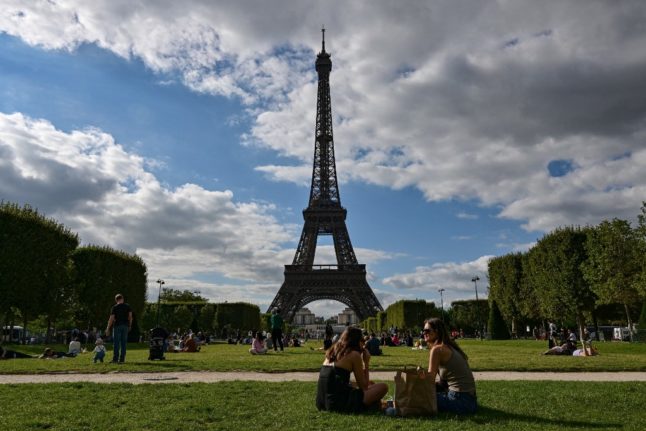France’s Eiffel Tower, also known as la Dame de fer (the Iron Lady) among French people, was originally built for the 1889 Exposition Universelle, and over the years it has become one of the country’s most popular tourist attractions, bringing millions of visitors ever year.
READ MORE: French Expression of the Day: La Dame de fer
Despite calls for its demolition in the years after the exhibition, it soon became the most iconic feature on the Paris skyline and one of the country’s most cherished monuments.
Here’s a look at some of the lesser known facts about France’s Iron Lady:
1. Two years, two months and five days – that’s how long it took to build the Eiffel Tower, with construction beginning in 1887.
2. 7,799,401.31 – what it cost in French gold Francs to build the monument. We’re not sure what the equivalent is in euros, but it sounds like a lot for back in the late 1880s.
3. 324 metres – the height of the Eiffel Tower, including the antenna at the top. That works out at 1,063 feet. Without the antenna it is 300 metres tall (984 feet).
4. Seven inches – That’s how much the tower grows in the sun. Yes the Eiffel Tower grows when it gets hot and shrinks in the cold. Although this is fairly hard to see with the naked eye.
5. 10,000 tonnes – how much the Iron Lady weighs.
6. 20 years – how long the Eiffel Tower was originally designed to last. It was built by Gustave Eiffel to commemorate the French Revolution and show off France’s industrial might. The removal men were meant to pull it down after 20 years, but Eiffel appears to have persuaded them to have a change of heart. The fact that the tower could be used as a wireless telegraph transmitter made it fairly useful and saved it from the wrecking ball.
7. 103,000 kilometres – That’s the distance one lift travels each year, according the site livescience.com, which, to put into perspective is two and a half times the circumference of the earth. There are of course steps up to the top – 1,710 of them – but visitors can only walk up to the first floor.
8. 19 – the number of times the Iron Lady has been repainted over the years. It takes a mammoth 60 tonnes of paint to give it a first coat. It’s clearly not a job for the faint hearted, but it must be done every seven years approximately.
9. 41 years – how long the Eiffel Tower was the world’s tallest building for, before the Chrysler Building in New York came along and stole its mantle.
10. 300 million – That’s the number of people who have paid a visit to the Eiffel Tower over the years, according to the Tower’s official website. Were you one of them?
11. 1944 – The year when the Eiffel Tower could have been pulled down. Hitler ordered the German military governor of France to tear it down but he refused.
12. 13 centimetres – Anyone who has been to the top might be able to guess what this figure is for. It’s the amount the Eiffel Tower sways in the wind. But don’t let that put you off going up.
13. €523,800 – That’s how much someone paid in a November 2016 auction for a section of the tower’s stairs. The price was over ten times the pre-sale estimate.



 Please whitelist us to continue reading.
Please whitelist us to continue reading.